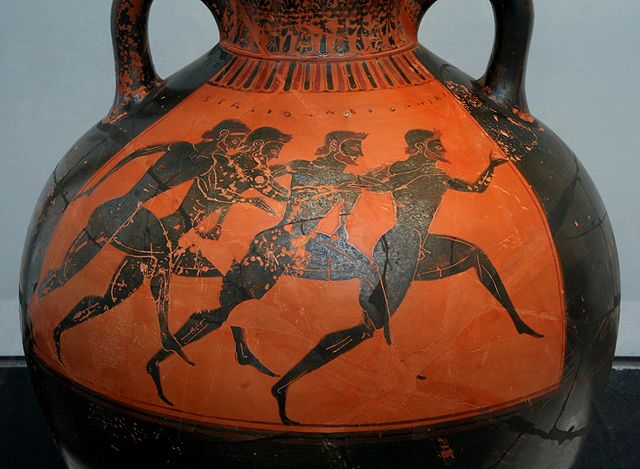The Panathenaic Games were held every four years in Athens in Ancient Greece from 566 BC to the 3rd century AD. These Games incorporated religious festival, ceremony, athletic competitions, and cultural events hosted within a stadium.
Greek vase depicting runners at the Panathenaic Games c. 530 BC
Harmodius and Aristogeiton the tyrannicides
The Panathenaic Stadium in Athens
Athena on a Panathenic amphora (National Archaeological Museum of Athens)
Harmodius and Aristogeiton
Harmodius and Aristogeiton were two lovers in Classical Athens who became known as the Tyrannicides for their assassination of Hipparchus, the brother of the tyrant Hippias, for which they were executed. A few years later, in 510 BC, the Spartan king Cleomenes I forced Hippias to go into exile, thereby opening the way to the subsequent democratic reforms of Cleisthenes. The Athenian democrats later celebrated Harmodius and Aristogeiton as national heroes, partially to conceal the role played by Sparta in the removal of the Athenian tyranny. Cleisthenes notably commissioned the famous statues of the Tyrannicides.
Statue of Harmodius and Aristogeiton, Naples. Roman copy of the Athenian version by Kritios and Nesiotes (see below)
Death of the tyrant Hipparchus, by the Syriskos Painter, 475–470 BC






